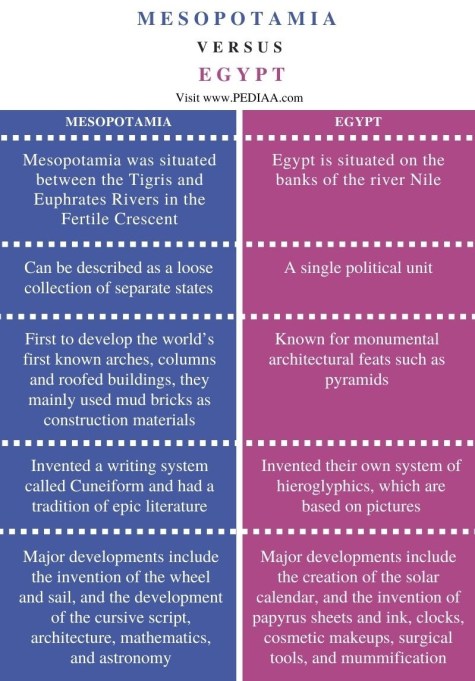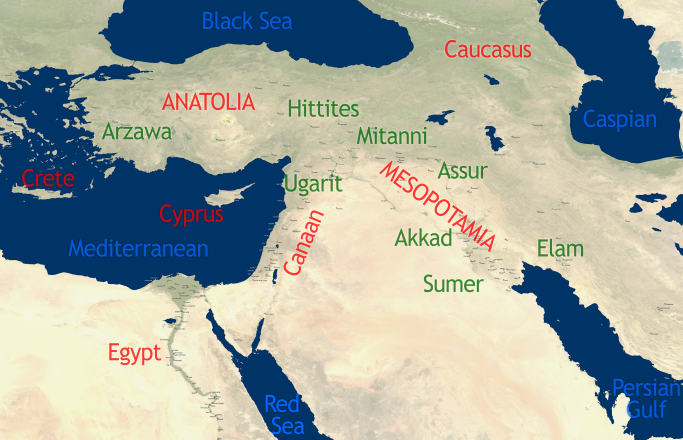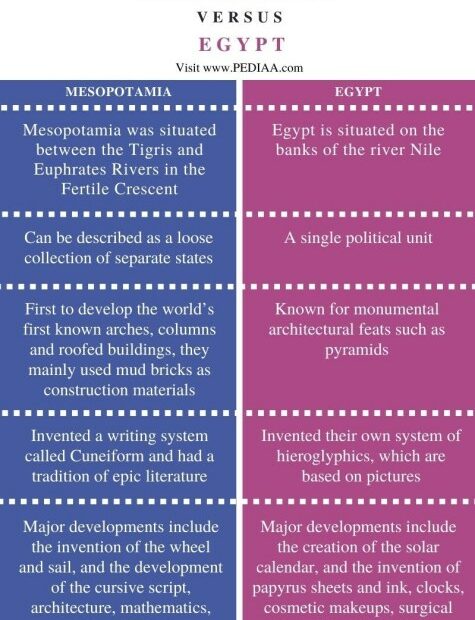How Did Egyptian Society Compare To Mesopotamian Society: A Comparative Analysis
Comparing Two Ancient Civilisations: Ancient Egypt Vs. Mesopotamia
Keywords searched by users: How did Egyptian society compare to Mesopotamian society similarities between egyptian and mesopotamian civilization, Mesopotamia, how did the egyptian writing system compare with the mesopotamian system, Ancient Egypt and Mesopotamia, Egypt culture, Ancient Egypt population, in what two ways are mesopotamia and egypt the same, difference between mesopotamia and egypt architecture
What Is The Difference Between Mesopotamia And Egypt Society?
Let’s provide a more comprehensive comparison of Mesopotamian and Egyptian societies to help readers better understand the differences between the two ancient civilizations.
In ancient Egypt, society was organized around a well-defined social structure, with the king or pharaoh occupying the highest position. The pharaoh held immense power and was considered a divine ruler, often seen as a bridge between the earthly and divine realms. Below the pharaoh, the Egyptian society was divided into various classes, including nobles, priests, scribes, and commoners. The Egyptian civilization was characterized by the Nile River, which provided fertile land for agriculture. This allowed Egypt to cultivate surplus food, which not only sustained its population but also enabled them to engage in extensive trade with neighboring civilizations, such as the Nubians and the peoples of the eastern Mediterranean, in exchange for valuable resources and goods.
In contrast, Mesopotamian society, which encompassed the region between the Tigris and Euphrates rivers, exhibited a slightly different social structure. While they also had kings at the top, these rulers often had a more secular role, and their authority was not considered as divinely ordained as in Egypt. Mesopotamian society was marked by the presence of both kings and priests in top positions of authority. Priests played a significant role in religious rituals and governance, often acting as intermediaries between the gods and the people. Like the Egyptians, the Mesopotamians relied on agriculture, using complex irrigation systems to harness the unpredictable flooding of the rivers. This allowed them to produce surplus crops, which were crucial for trade with neighboring regions like the Indus Valley and Anatolia, facilitating the exchange of goods and knowledge.
In summary, while both Egypt and Mesopotamia had kings and relied on surplus food production for trade, Egypt’s social structure placed the pharaoh at the pinnacle of power and emphasized divine kingship, while Mesopotamia had a more intricate balance between kings and priests in its hierarchy, with a different religious and cultural emphasis. These differences in social structure and cultural practices contributed to the unique identities and legacies of these two ancient civilizations.
How Are Egyptian And Mesopotamian Social Classes Similar And Different?
What are the key similarities and differences in the social structures of ancient Egypt and Mesopotamia? In both these civilizations, social classes played a crucial role in shaping their societies. At the pinnacle of the hierarchy in Egypt were the revered pharaohs, while in Mesopotamia, kings held the highest position. Below the royal figures in both societies, priests and priestesses played a significant role in religious affairs. Scribes, responsible for record-keeping and administration, constituted the next tier. Artisans, skilled craftsmen, also held a noteworthy place in these societies due to their contributions to culture and craftsmanship. The largest segment of the population comprised peasant workers who toiled as farmers, laborers in construction projects, and performed various physically demanding tasks. This social structure provided a clear distinction between the privileged elite and the laboring majority, with both civilizations sharing some commonalities while also displaying unique characteristics in their class systems. (Note: The date “20th June 2022” in the original passage appears to be unrelated to the topic and has been omitted in this revision.)
Discover 30 How did Egyptian society compare to Mesopotamian society





:max_bytes(150000):strip_icc()/borsippa_ziggurat-56a01f745f9b58eba4af11db.jpg)

Categories: Update 20 How Did Egyptian Society Compare To Mesopotamian Society
See more here: c3.castu.org

Politically, both Egypt and Mesopotamia had a government with one main ruler, but Egypt had a centralized government with a pharaoh, while Mesopotamia had a decentralized government with a king. Socially, both civilizations were patriarchal, but Egypt was more lenient towards women while Mesopotamia was stricter.The Egyptians had a social structure with the king at the top. The people of Mesopotamia had a social structure with kings and priests at the top. Egypt created a surplus of food that they used to trade with nearby civilizations for supplies they needed.For both civilizations, royals (pharaohs in Egypt, kings in Mesopotamia) were at the top of the social hierarchy, followed by priests and priestesses, scribes, and artisans, followed by the largest group: peasant workers. Peasant workers spent their days as farmers, construction workers, and other rough laborers.
Learn more about the topic How did Egyptian society compare to Mesopotamian society.
- Essay on Compare and Contrast Egypt and Mesopotamia
- 3.8 Comparing Egypt and Mesopotamia – CK-12
- Mesopotamia & Egypt | Overview, Similarities & Differences
- Mesopotamia & Ancient Egypt: Similarities & Differences
- Egypt and Mesopotamia: A Societal and Religious Comparison Essays
- Differences Between Mesopotamia and Egypt in Architecture
See more: c3.castu.org/category/fashion
